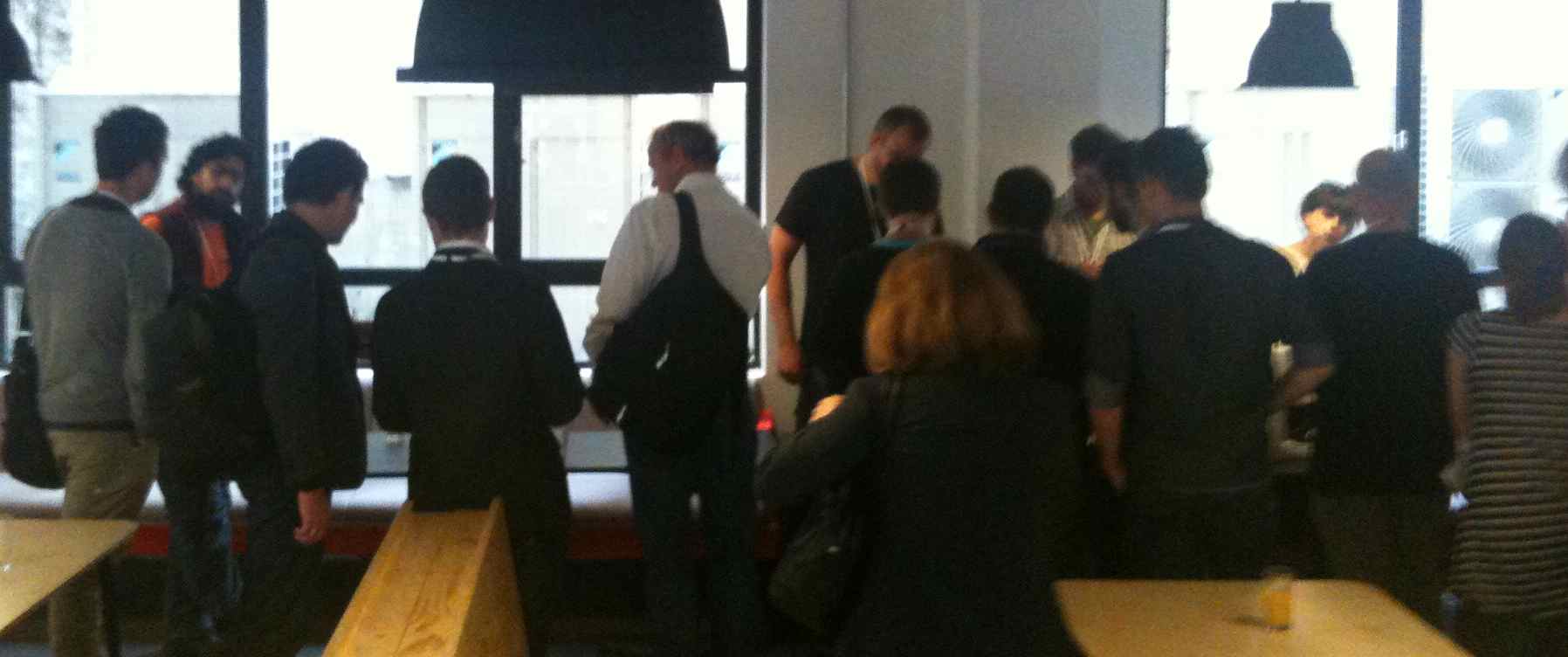
The Open IoT assembly wasn't all about Foucault, apocalypses, big data, and the signing of Very Important Documents. It was also about Things1.
I've already written about how technology develops ways of dealing with problems that previously humans could only contemplate solving with magic. At the time it was obvious how all the examples of magic were drawn from stories... What was less clear, perhaps, was how even technological objects are also given power by the stories.
Perhaps this is more the case for internet connected things -- their form is determined by the function of the physical Thing, what it will do, how it will be held, carried, or touched, what it needs to connect to... but the other side of the IoT device (connection to the internet, and processing via a silicon brain) doesn't affect the physical shape, and therefore gives no clues to the device's purpose.
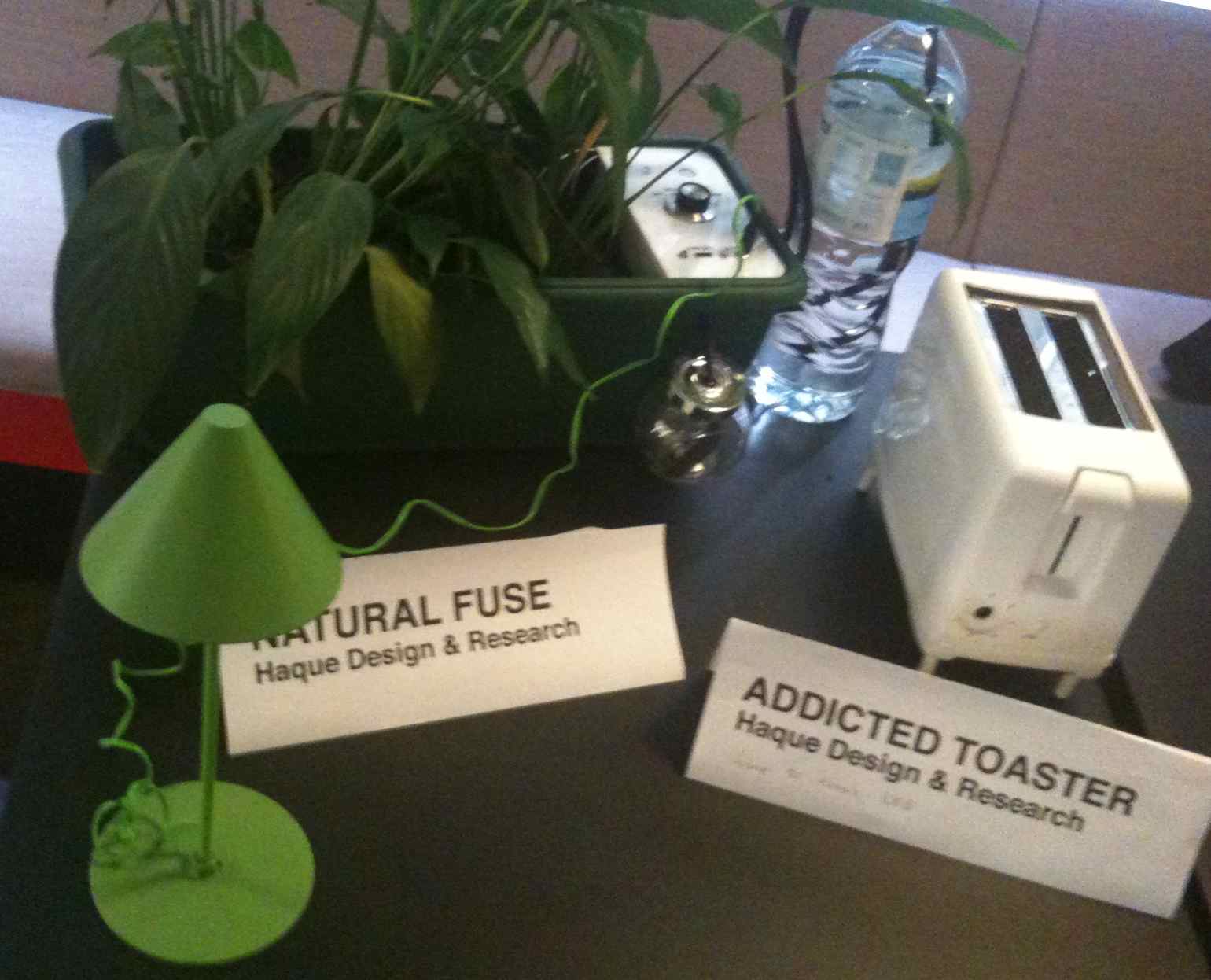
These two projects, by Usman Haque (@uah) looked fascinating - a plant pot with some instrumentation, and a toaster that moved its handle by itself, impatiently.
I managed to miss Usman at his stall, but luckily Thomas Amberg told me the
story of the first: the plant produces energy, which can be extracted
from the soil as electricity <snip>
Update (2012-06-25): Usman got in touch to correct my faulty memory of explanation, more details at naturalfuse.org. The plant generates oxygen by absorbing carbon, which offsets some of the carbon cost of the lamp. The lamp has 2 settings: Selfless and Selfish. In the first case, it will only power the lamp when enough carbon has been offset. As a single plant doesn't consume enough carbon, this means the lamp will flick on and off. So you can set it to Selfish to keep the lamp on all the time. But then you're creating a deficit in your electricity use. Once you've selfishly used a plant's worth of extra carbon, the attached rubber tubing will pump vinegar into a second plant pot, killing the plant as karmic revenge.
This is certainly not part of the "Internet of Boring Things".
Nobody could tell me what the toaster was about on the day, but Adrian pointed met at Addicted Products later, which has the full story. These toasters can't be bought, but choose their hosts carefully. They like to toast, and if you disappoint them they will grumble about you on twitter, get a complex about how much bread all the other online toasters are handling, and eventually advertise for a new host.
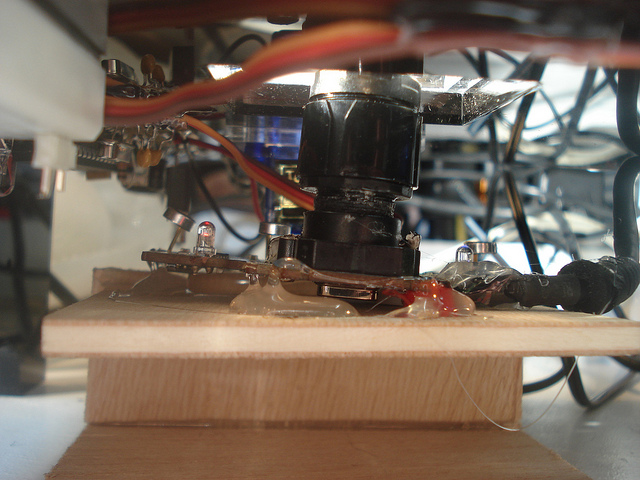
Thomas Amberg (@tamberg) was one of the first new people I met at OpenIoT -- a very nice guy working at an engineering firm in Zurich. He's managed to spin one of his work projects into its own company (with his employers conceding their IP as an investment, this is a really cute business bootstrapping model).
Yaler ("Relay" backwards) is a kind of middleware: it's a hosted service which allows a device to advertise itself on the internet, through firewalls, NAT, mobile networks and so on. Yaler then takes care of making this relay service scalable and redundant, while your web apps/monitoring systems etc. can securely speak to the device.
Does the previous paragraph sound more like marketing bumph than the writeup about Usman's projects? I guess it's harder to tell stories about internet services than it is about Things. The Yaler demo was also very subtle, so the photo above shows Yaler hooked up to some very exciting looking machinery instead.
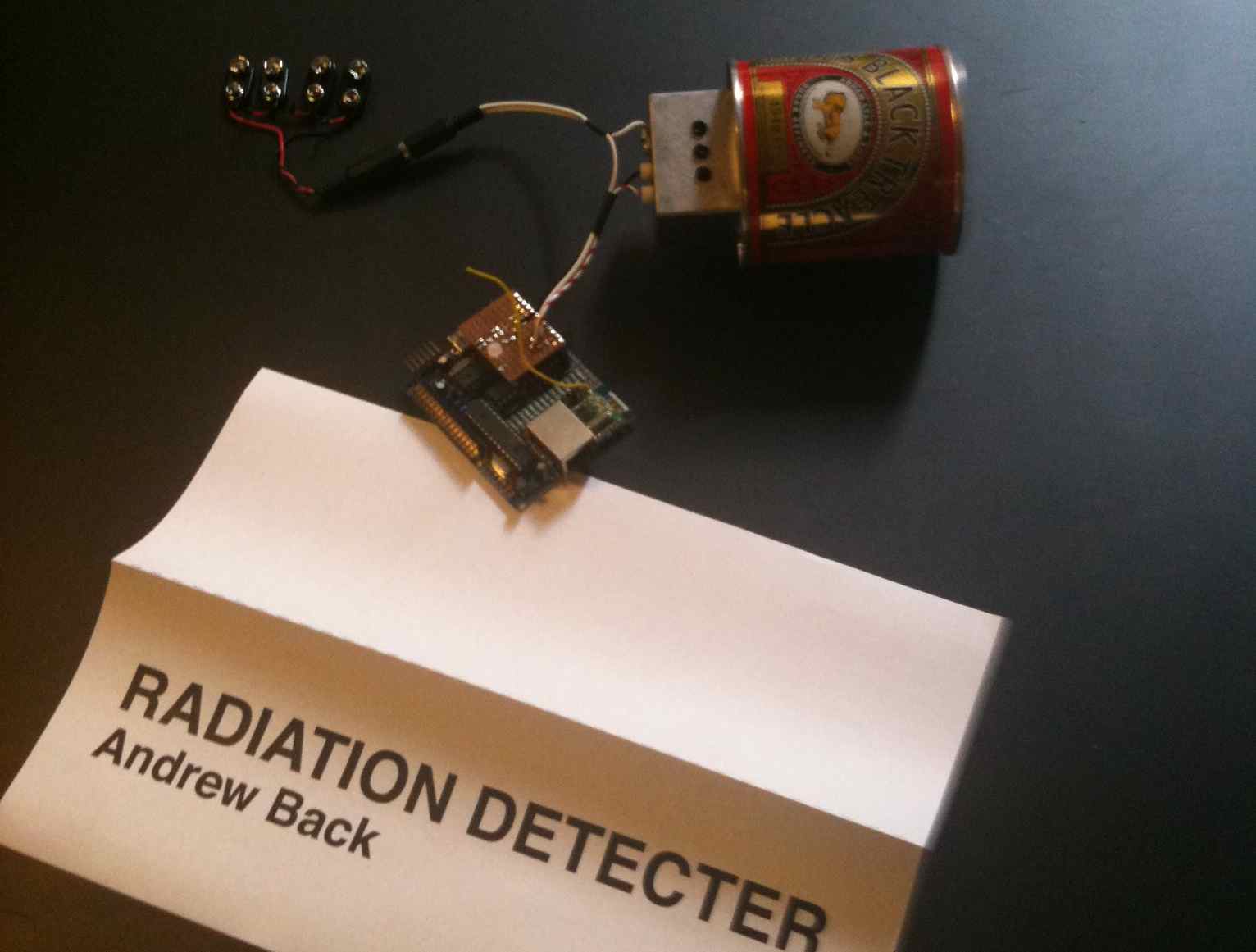
I got a sneak look at this and some other showcase projects on Sunday morning, before the conference started. As Andrew Back (@9600) explains here, the treacle tin is a cheap, easy to build radiation detector that doesn't require more expensive and hard to get hold of parts like a Geiger-Muller tube.
This came about after the Fukushima reactor disaster, when hackers banded together to help crowdsource radiation meter readings, prompted by fears of insufficient data to track the spread of the leakage. This nicely echoes Gavin Starks's (AMEE) points, in showing how geeks may be able to help alleviate, or perhaps prevent, environmental disaster with technology.
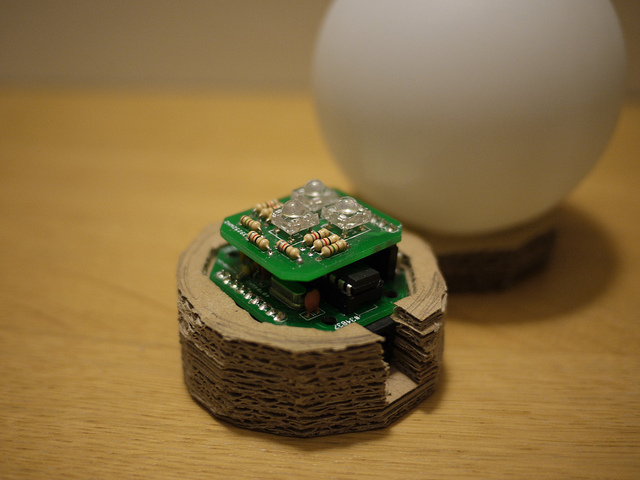
In the Enchanted Objects talk, I mentioned David Rose, who has blazed the trail on actually creating magical objects, like glowing umbrellas and the Ambient Orb, a lamp that glows different colours to represent something (your stock portfolio; the weather; number of unread emails etc.).
Nicholas O'Leary (@knolleary) has, as the title suggests, created a DIY version of this with an arduino and a commodity lamp globe. The current version is more sophisticated, with a custom PCB layered to fit inside an attractive base. The image above shows the prototype base, made of cardboard. He also had an attractive laser cut version. Note how there are three RGB LEDs. Using a simple reflective separator physically wedged between the lights, you can show three different colours at the same time too.
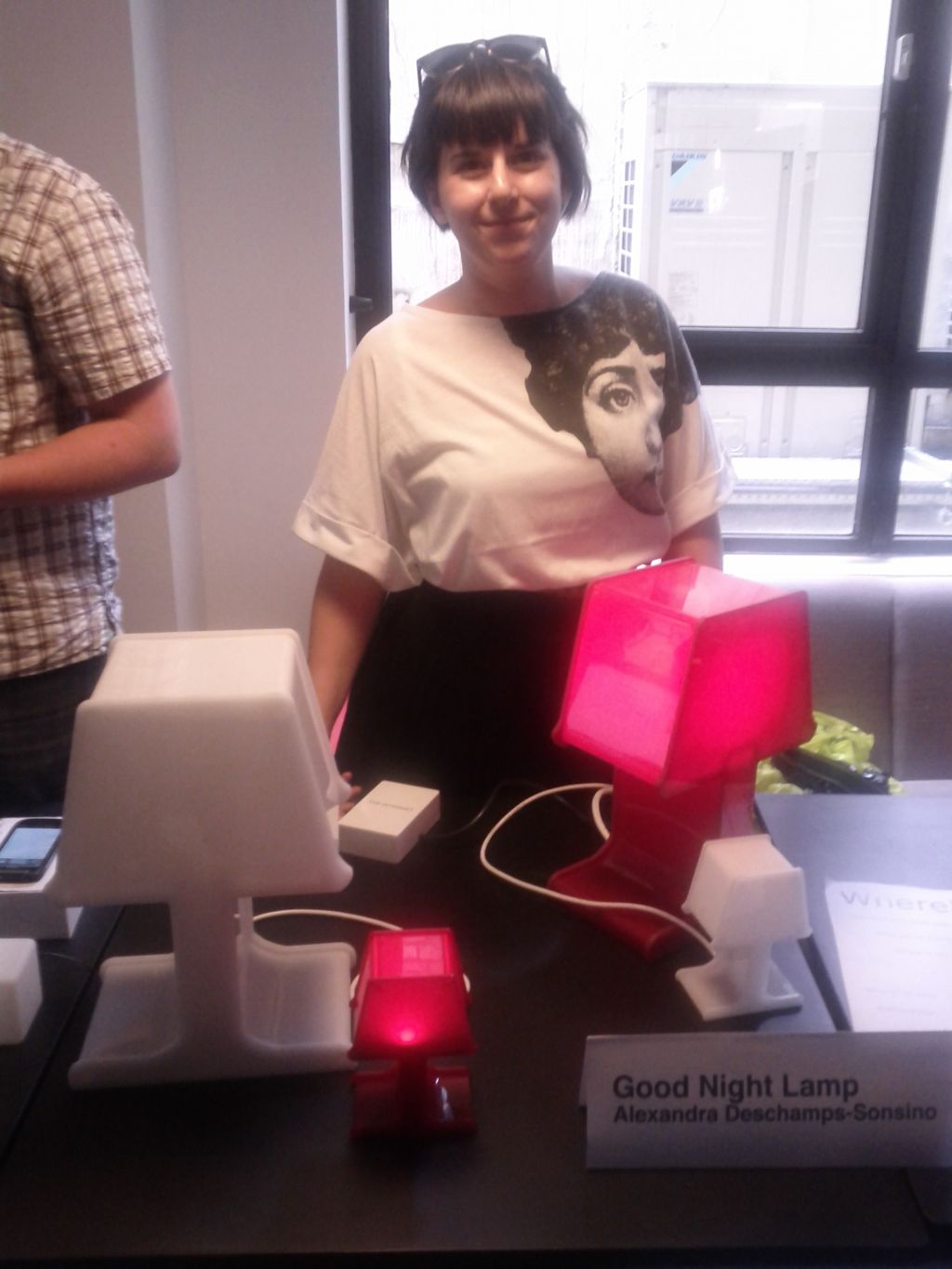
This is Alexandra Deschamps-Sonsino (@iotwatch), organiser of exquisite salons and seminal Internet of Things assemblies extraordinaire, with her new project, the Goodnight Lamp. This looks like a simple set of lamps (one large, several small). But the little lamps aren't controlled by their own switch, but rather by the big lamp to which they're linked.
I can definitely see uses for this, but the idea of other people knowing when you're asleep may or may not appeal to you. Rob van Kranenburg's keynote preached the death of privacy and the courage to "live in the light". What we're happy to share on the internet is already changing: this kind of compelling device, with a simple and powerful story of "You'll never come back to an empty home again" may speed this transition.
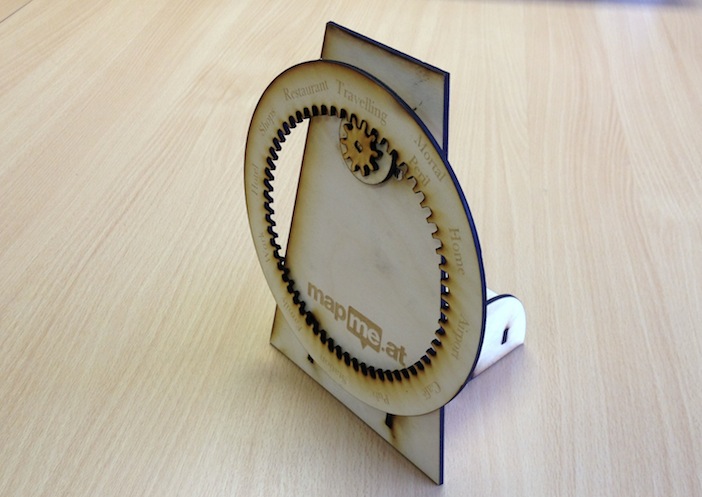
Our coworking and maker space, DoES Liverpool was present in force, with 3 exciting demos. The WhereDial was on, in demo mode, to show it turning more regularly. This is a beautiful object and, like Alex's Goodnight Lamp, on the vanguard of privacy sharing objects that could change the world. John McKerrell has spoken about the WhereDial here.
Bubblino, the little blue robot that delights conference goers by blowing bubbles was at OpenIoT, and enjoyed himself greatly. We had some interesting conversations about whether he follows Asimov's three laws of robotics.
While Bubblino is peace-loving, we discovered that he does make the floors a bit slick. It's unlikely that he would react fast enough to prevent a human being from coming to harm by slipping (but he would feel very bad about it).
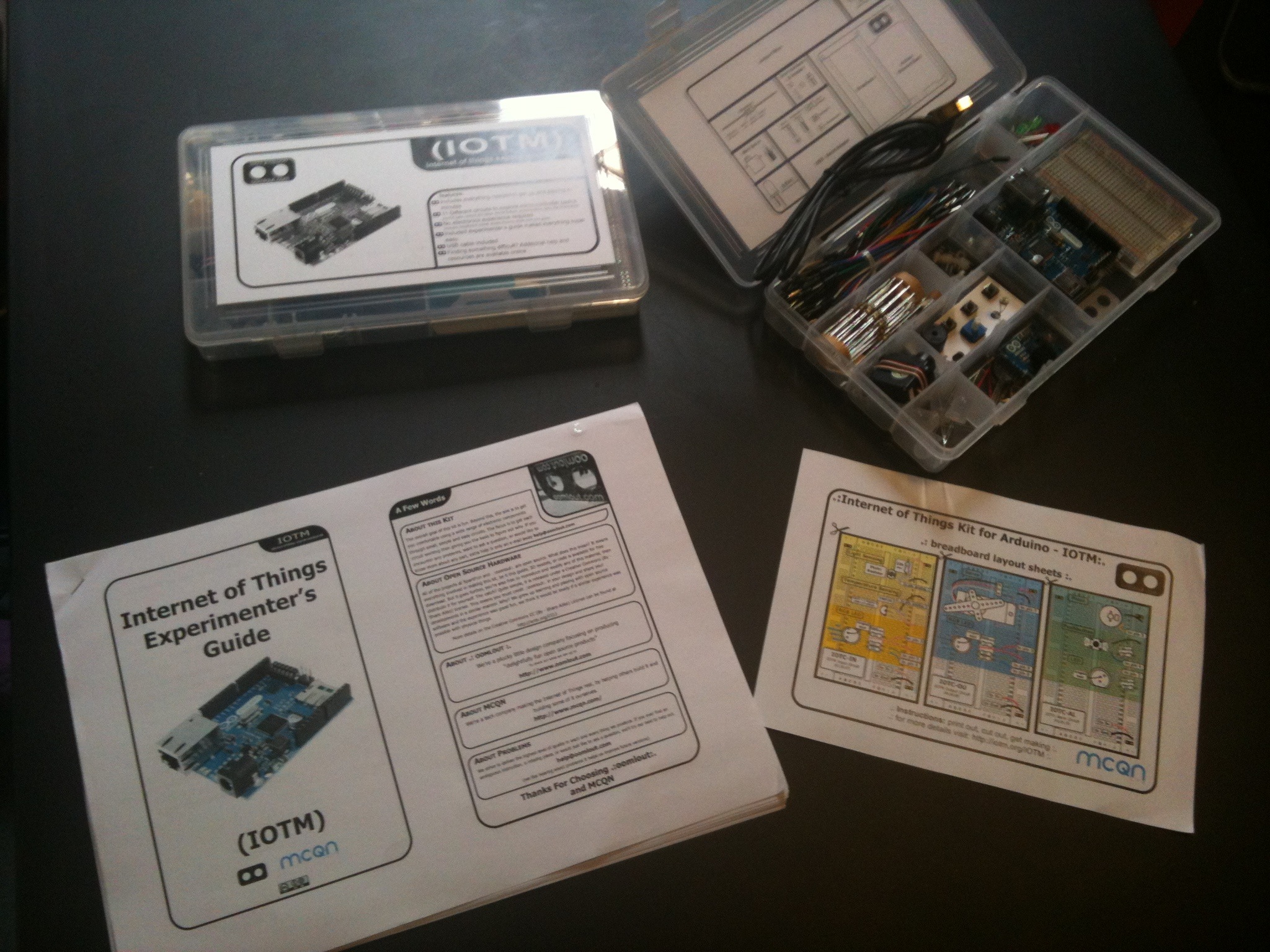
This isn't a Thing, but a kit for making Things. As such, perhaps it should be hard to "tell a story" about it, but in fact this IoTM kit (the Internet of Things Makers kit, produced by Adrian McEwen @amcewen and Oomlout @oomlout) resonated with many people. An electronics set was always a childhood toy that elicited admiration and awe in the uninitiated and, presumably, many happy memories in others (I guess, I was a Lego child myself). The kit contains an Arduino Ethernet, lots of exciting components and wires, and a manual to get you started with full details of many simple projects (flashing LEDs on receiving a tweet, writing temperature sensor readings to Cosm, and so on). It looks like development on the kit is almost done, and it should be out later this year.
1: Here, by Things, I don't mean "Objects invested (by people) with meaning in a context of power". Or maybe I do. But in a more down-and-dirty and fun way than Adam Greenfield's evocative phrasing suggests.
Read the other posts about #openiot